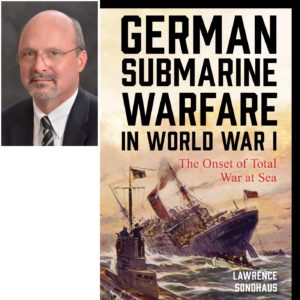Podcast: Play in new window | Download
Subscribe: RSS
 Lawrence Kaplan is a military historian who has worked for the US Army and has written numerous books on the subject. Today we spoke about his latest book on the American tank corps during WWI.
Lawrence Kaplan is a military historian who has worked for the US Army and has written numerous books on the subject. Today we spoke about his latest book on the American tank corps during WWI.
1:51 – Larry Kaplan talks about how he got into studying the American tank corps in WWI. He found a number of reports associated with the tank corps that hadn’t been discovered before or had been forgotten. Patton was one of the officers involved with the tank corps.
6:30 – Larry talks about the early development of the US Army tank corps. The French and the British helped the US in this effort. But not a lot was written about this history. Tanks were used for only 7 weeks at the end of the war.
11:20 – George Patton became the commander of the two tank battalions that were to be used in the war.
14:00 – Many of the records of these early tank battalions ended up missing. Larry found them among US Army Field Artillery records.
21:00 – Larry also collected newspaper accounts that were basically the letters home that some tank officers had sent home. He also made some extensive Congressional testimony on the WWI tank corps in WWI readable in a narrative form.
29:30 – Larry talks about what happened to the tank corps after WWI.
31:50 – Larry talks about a scandalous event that occurred during Patton’s time in WWI.
38:48 – The presence of American tanks helped US Army morale and hurt German morale.
39:39 – Larry summarizes how the end of the war went.
53:39 – Larry talks about how the tanks were moved around the theater of war. He also addresses problems with tank maintenance during combat. He gets into how an American officer named Brain was trying to develop requirements for an American-built tank.
58:30 – Larry will be publishing a translated and edited version of a Russian female soldier’s novel about serving in WWI.
For more “Military History Inside Out” please follow me on Facebook at warscholar, on twitter at Warscholar, on youtube at warscholar1945 and on Instagram @crisalvarezswarscholar
Guests: Lawrence Kaplan
Host: Cris Alvarez
Tags: military, history, military history, conflict, war, interview, non-fiction book, world war one, WWI, tank corps, armored warfare, George Patton, French, british, Germans

 Martin Kirby and Margaret Baguley are two of three Australian academics who have been editing a new book exploring how war since 1914 has been represented in the arts in Australasia, the US, and in the British Isles. I spoke with Margaret and Martin about the book.
Martin Kirby and Margaret Baguley are two of three Australian academics who have been editing a new book exploring how war since 1914 has been represented in the arts in Australasia, the US, and in the British Isles. I spoke with Margaret and Martin about the book. Dr. Lawrence Sondhaus is Professor of History at the University of Indianapolis. He has written numerous books about Naval warfare and about WWI with a focus on the Central Powers. I was able to interview him about his most recent book on German submarine warfare in WWI.
Dr. Lawrence Sondhaus is Professor of History at the University of Indianapolis. He has written numerous books about Naval warfare and about WWI with a focus on the Central Powers. I was able to interview him about his most recent book on German submarine warfare in WWI.